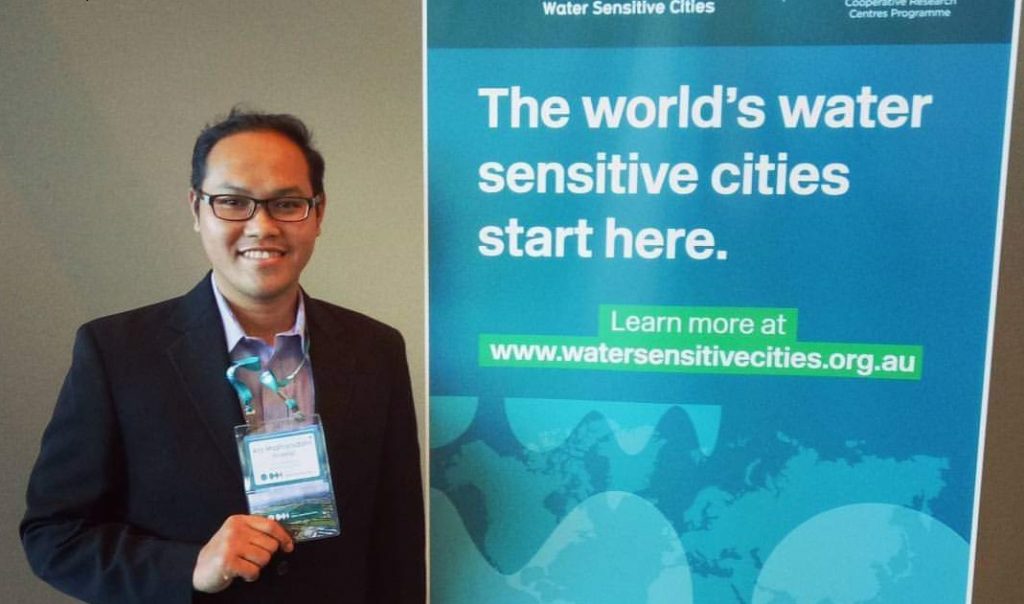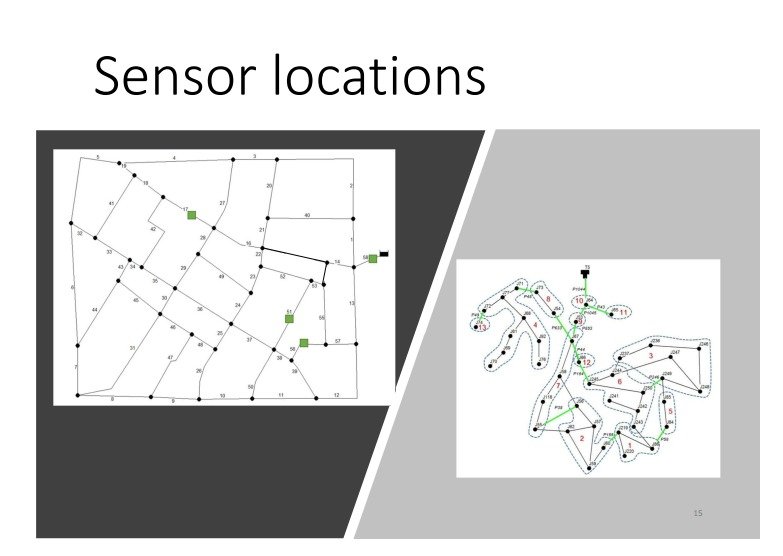ITS Lecturer Innovated Ways to Minimize Loss Due to Water Pipe Leaks

ITS Lecturer, Ary Mazharuddin Shiddiqi, Ph.D., who innovated ways to minimize loss due to water pipe leaks
ITS Campus, ITS News – There are many ways to overcome the problem of leakage in water pipes that causes a huge loss, one of them by using a water flow sensor mounted on a water pipe system. In response to this, a lecturer from the Department of Informatics of Institut Teknologi Sepuluh Nopember (ITS) designed a sensor placement method to detect water pipe leaks using the Lean Graph technique to minimize loss.
He is Ary Mazharuddin Shiddiqi, Ph.D., a lecturer who is also the Department Secretary of Academic and Student Affairs at the Department of Informatics, who saw that the small amount of rainfall in Australia (where he studied for his doctoral studies) had an impact on the limited supply of clean water. “Therefore, leakage in water pipes is something that must be taken seriously,” he began.
Ary mentioned that in general, there are two types of leaks in water pipes, namely large leaks or bursts and small leaks. In large leaks, water will be wasted in large volumes in a short time. “However, major leaks are generally invisible, so it is easy to find and deal with quickly,” he explained.
In contrast to large leaks, small leaks usually last for a long time in underground pipes because it is difficult to detect their location. “The total water that is wasted from small leaks is far more when compared to large leaks because the volume of leaked water accumulates over a long time,” Ary elaborated.
Therefore, he continued, to minimize the loss caused by small leaks in water pipelines, water flow sensors are used to predict the size of the leak and track where the leakage points occur. Ary uses a water flow sensor because it is considered more accurate when compared to the water pressure sensor.
Leak detection using a water flow sensor is taken from the water balance law. For example, if the demand for water from houses sums up to 10 liters, but the water source (reservoir) releases 11 liters of water, then the difference in one liter is the amount lost due to leakage. “If demand remains, but the sensor provides data on the addition of water flow into the system, then there will be symptoms of leakage,” he further explained.

Examples of placement of water pipe sensors designed by ITS lecturer
Placing a large number of sensors can certainly make the detection of small leaks easily, but system designers must also pay attention to the amount spent. “Therefore we must maximize the function of the sensors properly even with a limited number,” clarified this man from Kediri.
To maximize the function of the sensor, a strategy is needed to place the sensors in effective locations. In his research that was conducted from 2014 to 2019, as the topic of his doctoral thesis, Ary used Lean Graph modeling to characterize small leaks in the pipeline.
This man, who completed his doctoral studies in Australia, proved that Lean Graph was effective in finding the most strategic sensor locations to find the location of water pipe leaks. This was justified by the high accuracy of the methods built-in the experiments he conducted.
Ary’s findings are currently in the simulation stage through the EPANET simulator which is considered to be very accurate and popular to be used by civil engineering practitioners. In the future, this lecturer who is also an ITS Informatics graduate hopes that the handling of water leakage will become a glaring concern. “Because clean water is a basic need,” concluded Ary. (rys/ory/ITS Public Relations)
Related News
-
ITS Wins 2024 Project Implementation Award for Commitment to Gender Implementation
ITS Campus, ITS News —Not only technology-oriented, Institut Teknologi Sepuluh Nopember (ITS) also show its commitment to support gender
July 08, 2020 22:07 -
ITS Professor Researched the Role of Human Integration in Sustainable Architecture
ITS Campus, ITS News –The developing era has an impact on many aspects of life, including in the field
July 08, 2020 22:07 -
ITS Sends Off Group for Joint Homecoming to 64 Destination Areas
ITS Campus, ITS News — Approaching Eid al-Fitr, the Sepuluh Nopember Institute of Technology (ITS) is once again facilitating academics who want
July 08, 2020 22:07 -
ITS Expert: IHSG Decline Has Significant Impact on Indonesian Economy
ITS Campus, ITS News — The decline in the Composite Stock Price Index (IHSG) by five percent on March 18,
July 08, 2020 22:07
